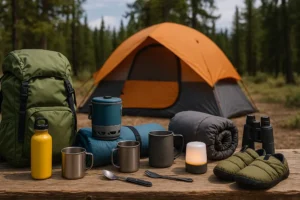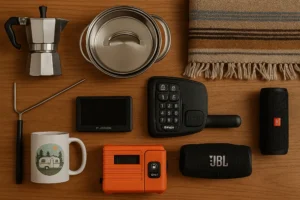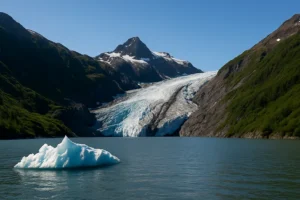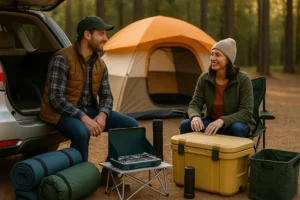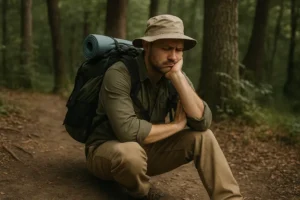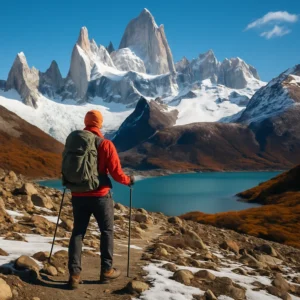How long does it take to hike the Appalachian Trail? On average, five to seven months. That’s the short answer. The long answer? It depends on your pace, your preparation, the weather, and how many times you’re willing to stop and take in a view instead of chasing miles. This 2,190-mile path from Georgia to Maine will test your legs, your lungs, and most of all your mind.
The Scale of the AT
The Appalachian Trail is a living, breathing challenge. It stretches across 14 states, winding through forests, crossing ridges, dipping into valleys, and occasionally brushing past small towns that seem frozen in time. Over the course of the journey, you’ll gain and lose hundreds of thousands of feet in elevation enough to make your quads beg for mercy and your calves tough as leather.
It’s not a straight shot from point A to point B. Every section has its own mood, pace, and obstacles. The southern mountains welcome you with wildflowers and rolling hills. The mid-Atlantic lets you stretch your stride with flatter terrain. And then New England? It hits you with steep, rocky climbs that force you to slow down and dig deep.
The Average Timeline
If you’re going for a thru-hike, completing the entire trail in one continuous journey, most hikers spend five to seven months on the trail. That’s about 150–210 days of hiking. It’s a huge commitment.
Here’s what that usually looks like:
- First few weeks: You’re building trail legs. 8–12 miles per day feels like plenty, especially when your pack feels like it’s full of bricks.
- Middle months: You’ve hit your stride. 15–20 miles a day is comfortable.
- Final stretch: You’re fit, efficient, and maybe a little impatient. Some days stretch to 20–25 miles as the end comes into sight.
But remember, those averages don’t account for zero days (rest days spent in towns or shelters), weather delays, or injuries.
Factors That Affect Your Pace
1. Fitness Level
Starting in good shape is a gift you give your future self. Strong legs, a resilient core, and endurance will carry you further with less strain. But trail fitness is different from gym fitness, you’ll still need time to adapt to hiking day after day.
2. Weather
The AT is notorious for its mood swings. One day might be sunny and calm; the next could bring freezing rain or blistering heat. Snow in the mountains can slow you to a crawl. Summer storms can turn the trail into a slippery mess.
3. Terrain
Not all miles are equal. A flat 20-mile day in the mid-Atlantic might take less effort than a 10-mile day in the White Mountains of New Hampshire. Rocky paths, steep climbs, and muddy sections will slow your pace.
4. Injuries and Recovery
Even the most prepared hikers can’t dodge every injury. Blisters, tendonitis, and muscle strains can cost you days or weeks if ignored.
5. Rest Days
Zero days are part of the thru-hiking rhythm. They keep you sane, let your body recover, and often give you a chance to wash clothes, resupply, and eat something that didn’t come out of a food bag.
Northbound vs. Southbound
Your direction matters.
- Northbound (NOBO) hikers start in Georgia, usually between February and April. The idea is to reach Maine before the harsh winter sets in. You start with milder terrain and build strength before hitting New England’s challenges.
- Southbound (SOBO) hikers start in Maine, typically June through July, after the snow has melted in the north. They begin with some of the toughest climbs right out of the gate. The reward? Fewer crowds and a head start on fall colors.
Each route has its own pros and cons, but both require careful timing. Leave too early and you risk snow. Leave too late and you might not make it before winter closes in.
Breaking Down the Trail
Southern Appalachians
The early miles especially if you’re NOBO introduce you to the rhythm of trail life. You’ll pass through lush forests, climb ridges with sweeping views, and encounter early-season weather swings. The climbs are steady, not brutal, but they’ll still test your stamina.
Mid-Atlantic
This is where you can make up time. The terrain flattens out, allowing for longer mileage days. Some hikers cruise through these states, but it’s worth slowing down to appreciate the history, small towns, and wildlife along the way.
New England
The toughest and most dramatic section for many hikers. Think steep ascents, exposed ridges, rocky scrambles, and unpredictable weather. Progress is slower here, but the scenery is unmatched.
Planning for the Long Haul
Training
Don’t step onto the AT cold. Get used to carrying your pack on day hikes. Train your legs for steep ascents and descents. Practice hiking in all kinds of weather.
Gear Adjustments
Your gear needs will shift with the seasons. Lighter layers for summer, warmer ones for early spring or late fall. Footwear is personal, some swear by trail runners, others by sturdy boots, but whatever you choose, break them in before you start.
Flexibility is Key
A strict day-by-day plan might look good on paper, but the trail will throw surprises at you. Storms, trail closures, injury, you have to be ready to adapt.
A Mental Marathon
Physical endurance is only half the battle. The mental side is just as tough.
There will be days when you question why you started. Days when the rain doesn’t stop, when your feet ache with every step, when the next town feels impossibly far. The hikers who finish aren’t always the fittest, they’re the ones who find ways to push through the hard days.
Some lean on a trail family, friends made along the way who share miles, meals, and morale boosts. Others find strength in solitude. There’s no right approach, only the one that keeps you moving forward.
Tips to Make It to the End
- Start Slower Than You Think You Should
Avoid overuse injuries by letting your body adjust before pushing big miles. - Respect the Weather
If a storm is coming, hunker down. The trail will still be there tomorrow. - Take Care of Your Feet
Dry socks, breathable shoes, and blister prevention are non-negotiable. - Eat More Than You Think You Need
You’ll burn thousands of calories daily, don’t skimp on fuel. - Stay Flexible
Plans are useful, but adaptability will save your hike. - Enjoy the Moments
The AT is about the journey, not just the finish line.
So… How Long Does It Really Take?
If you’re asking how long does it take to hike the Appalachian Trail, the most honest answer is this: as long as it takes you. For some, that’s five months of steady, focused hiking. For others, it’s seven months filled with side trips, rest days, and lingering in the places that feel like home.
You can track averages, plan daily mileage, and study the elevation profiles. But when you’re out there, time becomes something different. It’s measured in sunrises, in the miles between shelters, in how many steps you can take before stopping to breathe in the view.
And when you finally stand at the end, whether it’s a sign on a mountaintop or a plaque in the woods, you’ll realize that the real value wasn’t in how fast you finished, but in every single day it took to get there.





